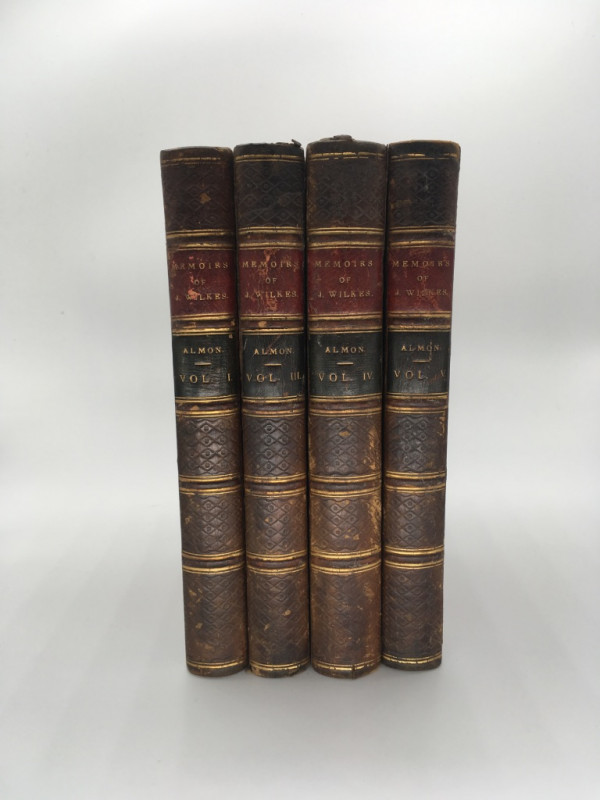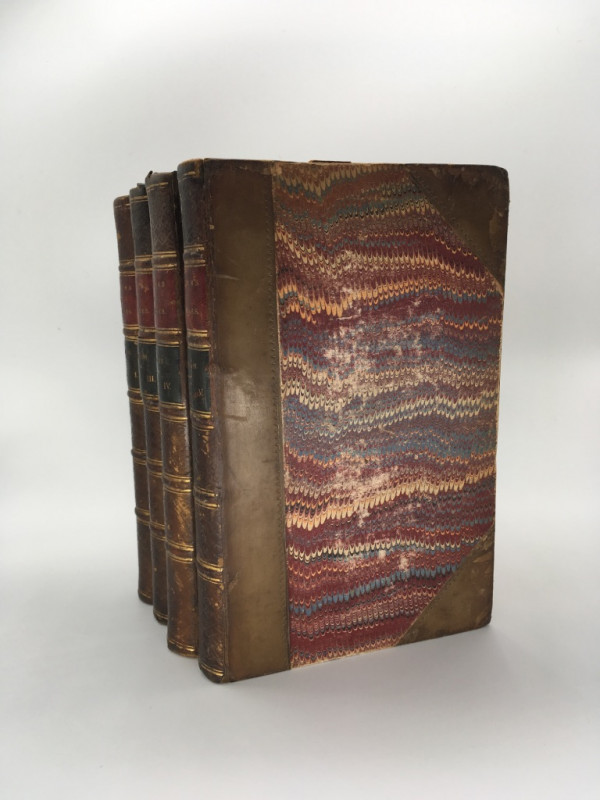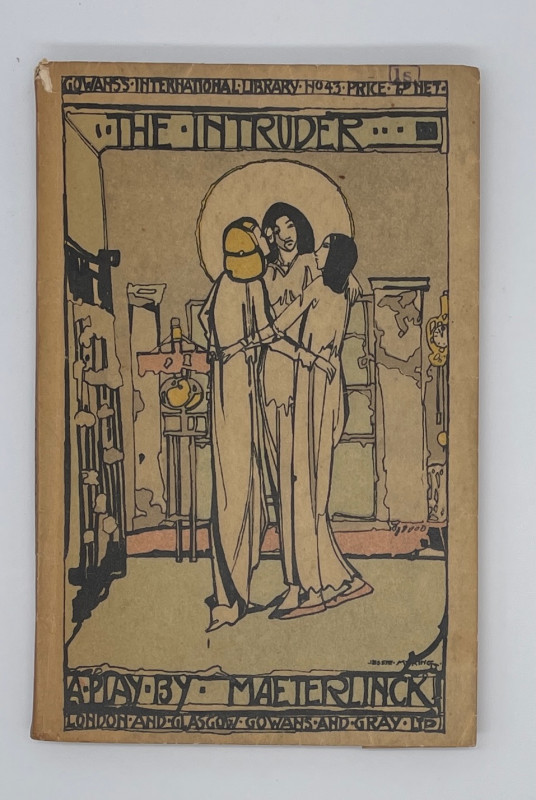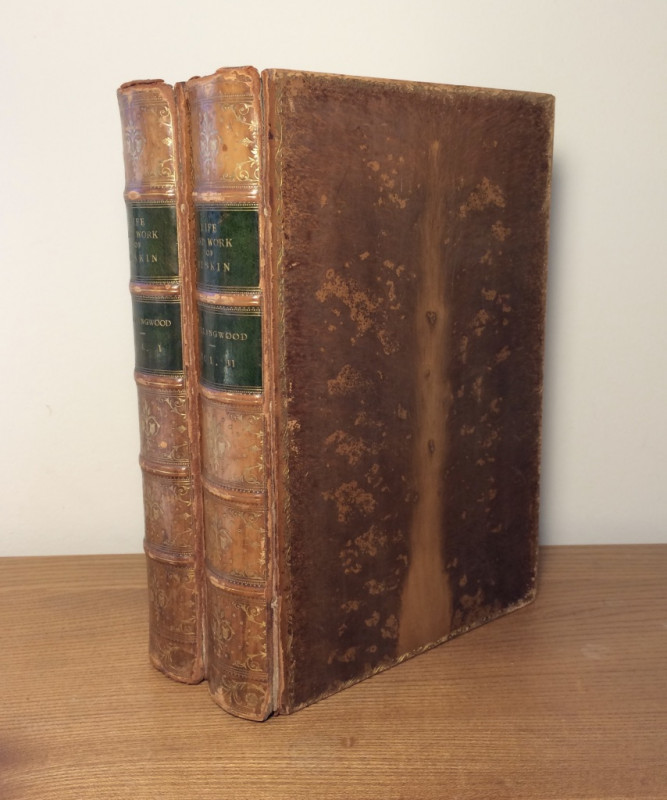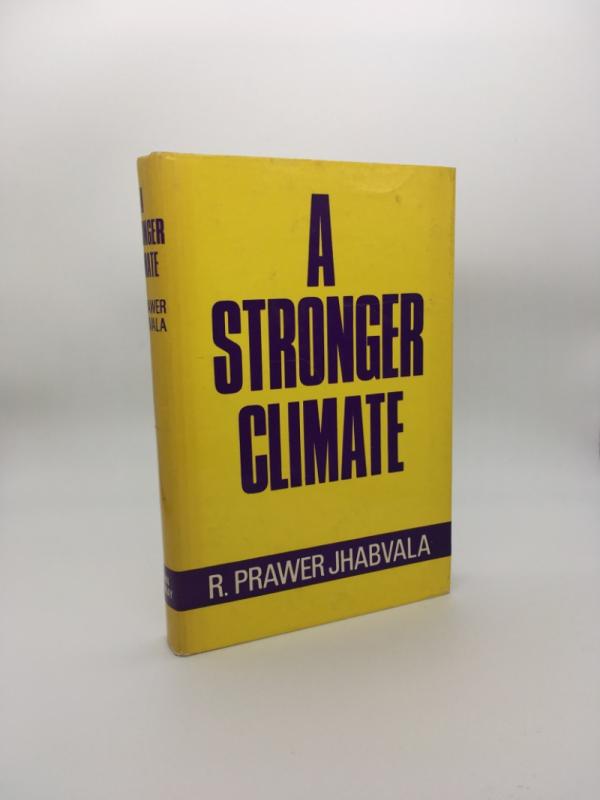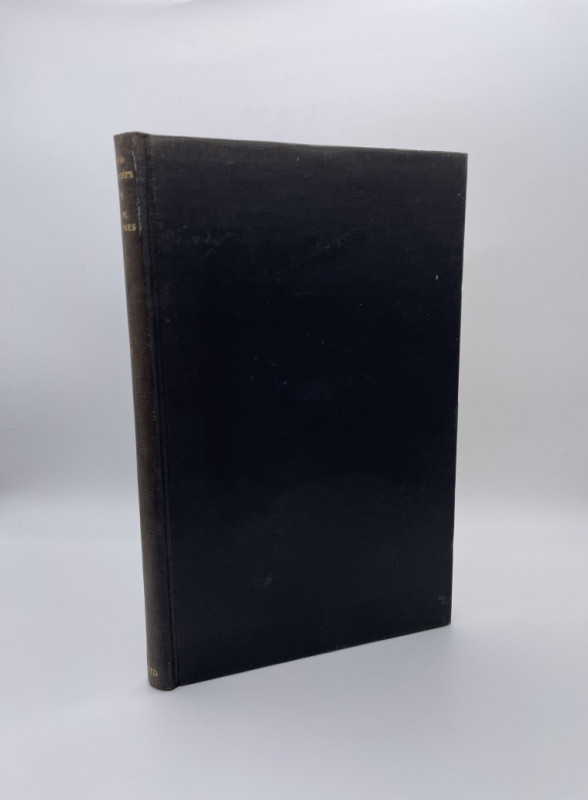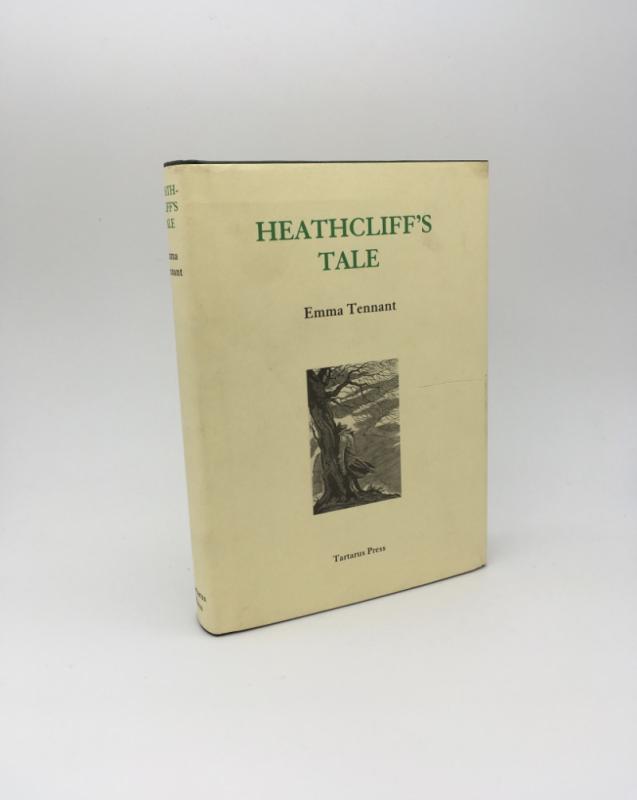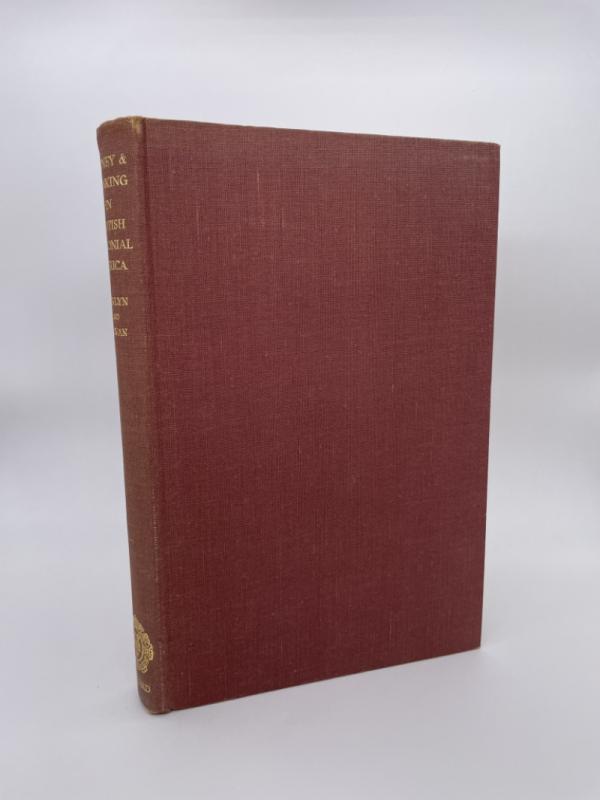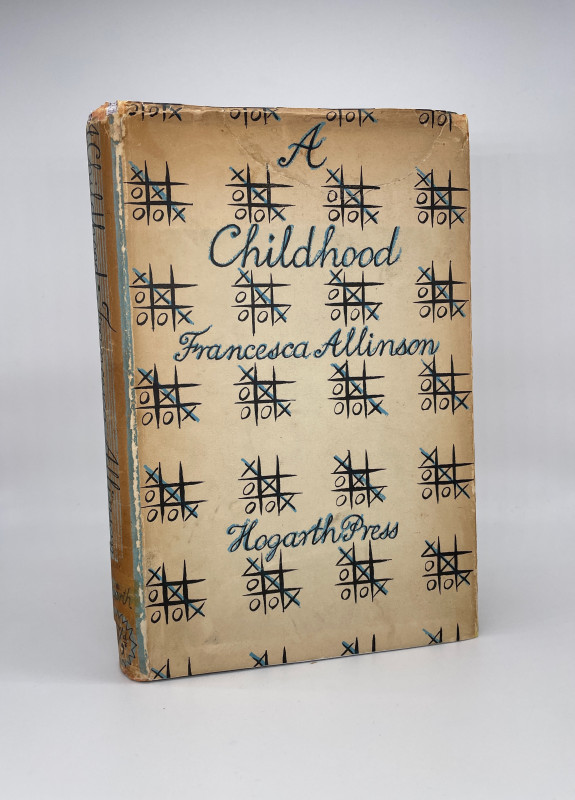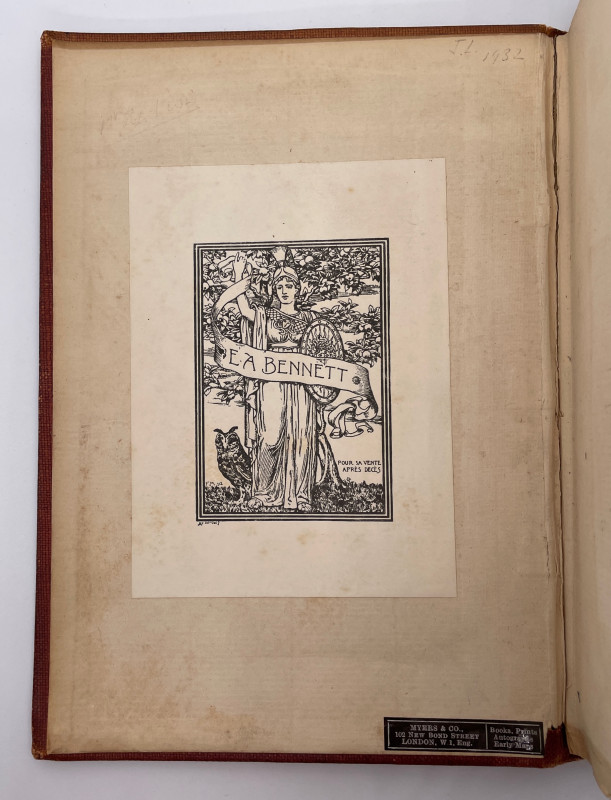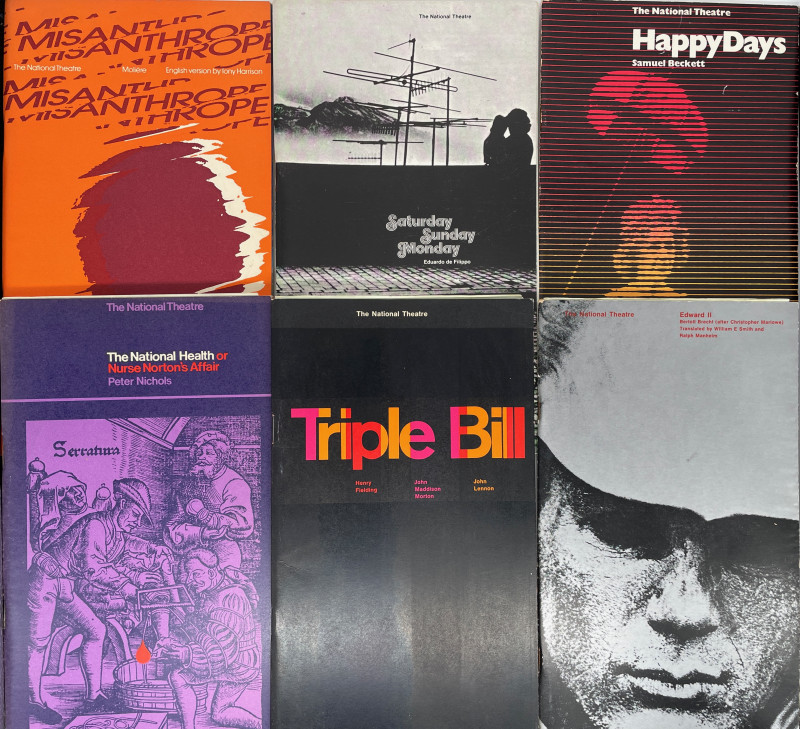The Correspondence of the Late John Wilkes, with his Friends: Printed from the original manuscripts, in which are introduced memoirs of his Life, by John Almon. (4 volumes only)
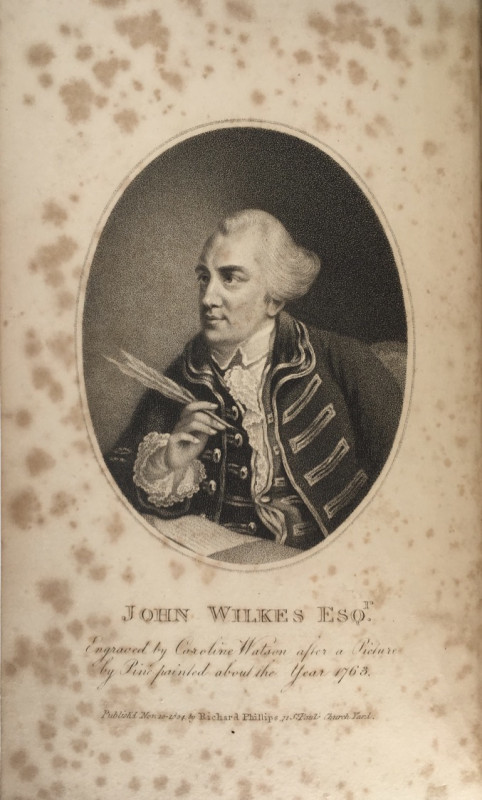



Book Description
FIRST EDITION. 4 (of 5) volumes: I, III, IV & V. 12mos, pp. xx, [272] + portrait frontis (stipple engraved by Caroline Watson) and fold-out facsimile letter; iv, 300 + facsimile letter; [iv], 344 + fold-out facsimile letter; iv, 286, [lacks 2 pages of adverts]. Later half calf over marbled boards, 5 raised bands, gilt-ruled, red and black morocco labels lettered in gilt, compartments diced. Edges speckled red. All vols.: rubbed, spines darkened, wear and bruising to corners, heavy bumping to top edges, some strips of calf missing from corners. Endpapers browned, glue-residue from former bookplates to front pastedowns, POI to ffeps, ‘25 June 1938’ stamp and price in pencil (for four vols. only) to rear pastedowns. Occasional foxing, pencil scoring and marginalia, pencil notes to rear pastedowns. Vol. I: front hinge starting, prelims, frontis and rear foxed, offsetting to title page, ‘B. H. Blackwell Ltd, Booksellers, Oxford’ label to front pastedown; Vol III: rear joint starting, subtle repair to top spine compartment, black morocco label flapping, letter foxed; Vol. IV: split to head of front joint. Else, tidy and robust: four pleasing volumes of what would have been a handsome set. N.B. A different printer’s imprint to each volume. Sabin 104004. Very good.
Dealer Notes
John Wilkes (1725-1797) was a British politician and journalist, agitator and renowned rake (despite also being renowned for his ugliness: it took him half an hour to talk his face away, he claimed), whose ‘political talent […] lay in his pen’ (ODNB). A radical, through his weekly publication, the North Briton, he was a significant thorn in the side of Lord Bute and George Grenville’s successive governments. This political irritation continued, as, through various legal skirmishes with government, plus his later control of the City of London, he paved the way for substantial legal and parliamentary reform, including establishing the freedom of the press to report on Parliament. Lionised as a ‘champion of liberty,’ Wilkes saw common cause on both sides of the Atlantic and supported American resistance (though not independence).
Caroline Watson (1760/1-1814) was celebrated for her stipple engraving and is considered the first woman to work professionally (i.e. independently, outside of a family enterprise) as an engraver, as well as running her own printing business from Fitzroy Street, London in the 1780s. She became Engraver to the Queen (Charlotte) in 1785. A prolific engraver of portraits, her reproductions included many significant women of the day, such as Elizabeth Carter and Sarah Siddons. Watson’s engraving of Wilkes (after Pine) shows his squint, but with none of Hogarth’s cruel parody; her father, the famed Mezzotint artist James Watson, also produced a version of Pine’s painting.
Caroline Watson (1760/1-1814) was celebrated for her stipple engraving and is considered the first woman to work professionally (i.e. independently, outside of a family enterprise) as an engraver, as well as running her own printing business from Fitzroy Street, London in the 1780s. She became Engraver to the Queen (Charlotte) in 1785. A prolific engraver of portraits, her reproductions included many significant women of the day, such as Elizabeth Carter and Sarah Siddons. Watson’s engraving of Wilkes (after Pine) shows his squint, but with none of Hogarth’s cruel parody; her father, the famed Mezzotint artist James Watson, also produced a version of Pine’s painting.
Author
WILKES, John; ALMON, John (editor); WATSON, Caroline (engraver)
Date
1805
Publisher
London: Printed for Richard Phillips, by T. Gillet
Condition
Very good
Friends of the PBFA
For £10 get free entry to our fairs, updates from the PBFA and more.
Please email info@pbfa.org for more information
